thesis: social methodology & systems
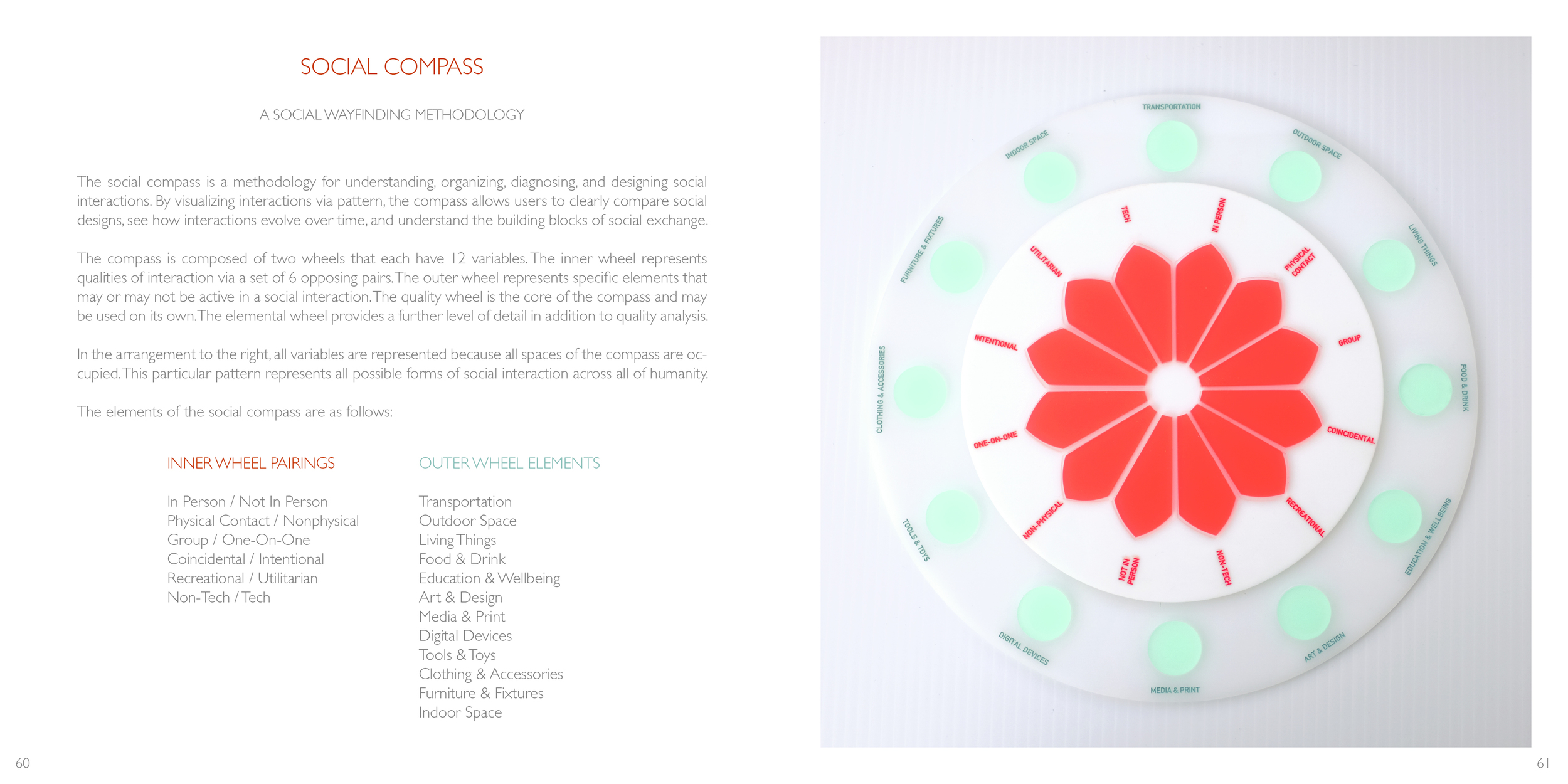
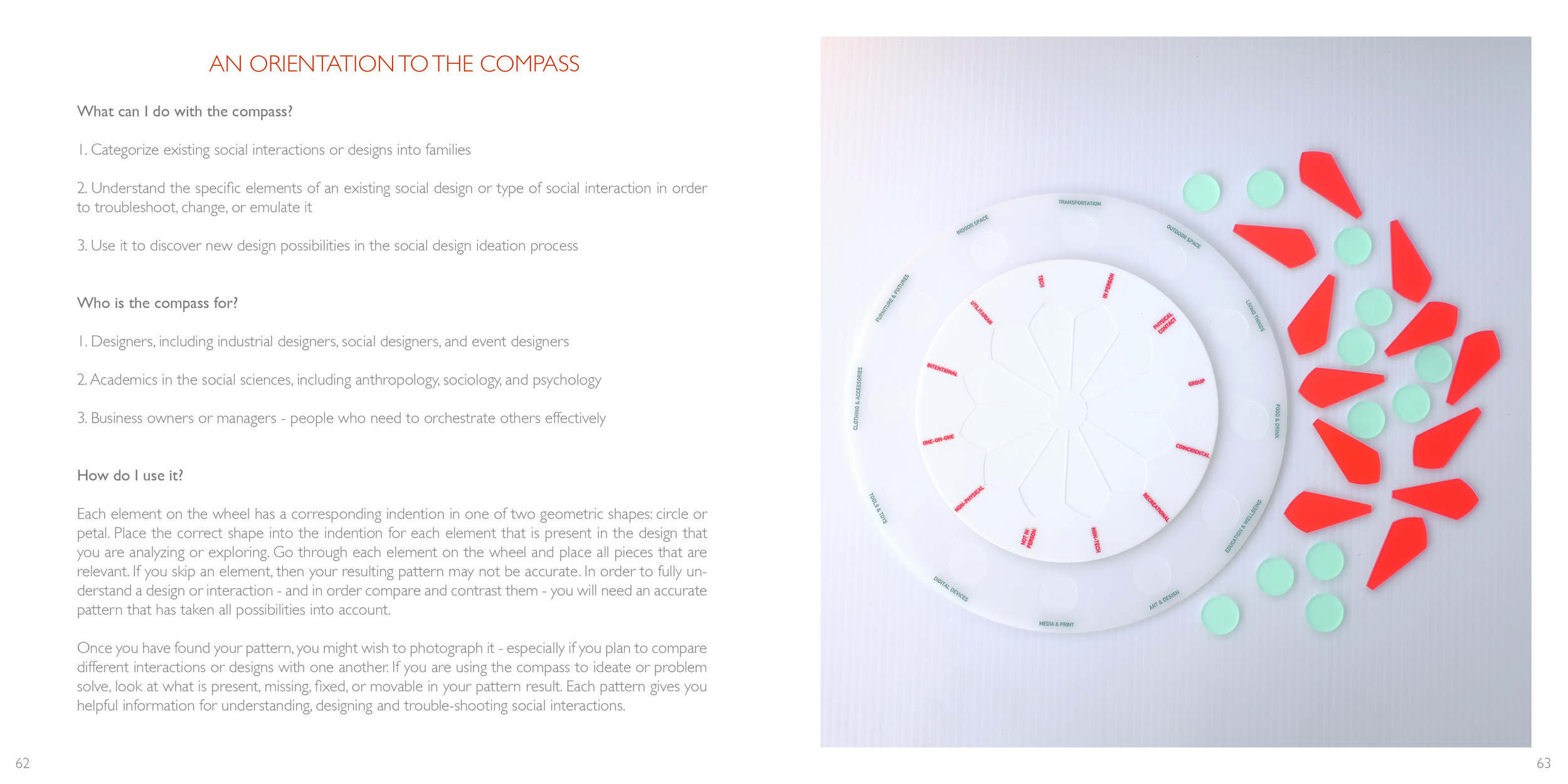
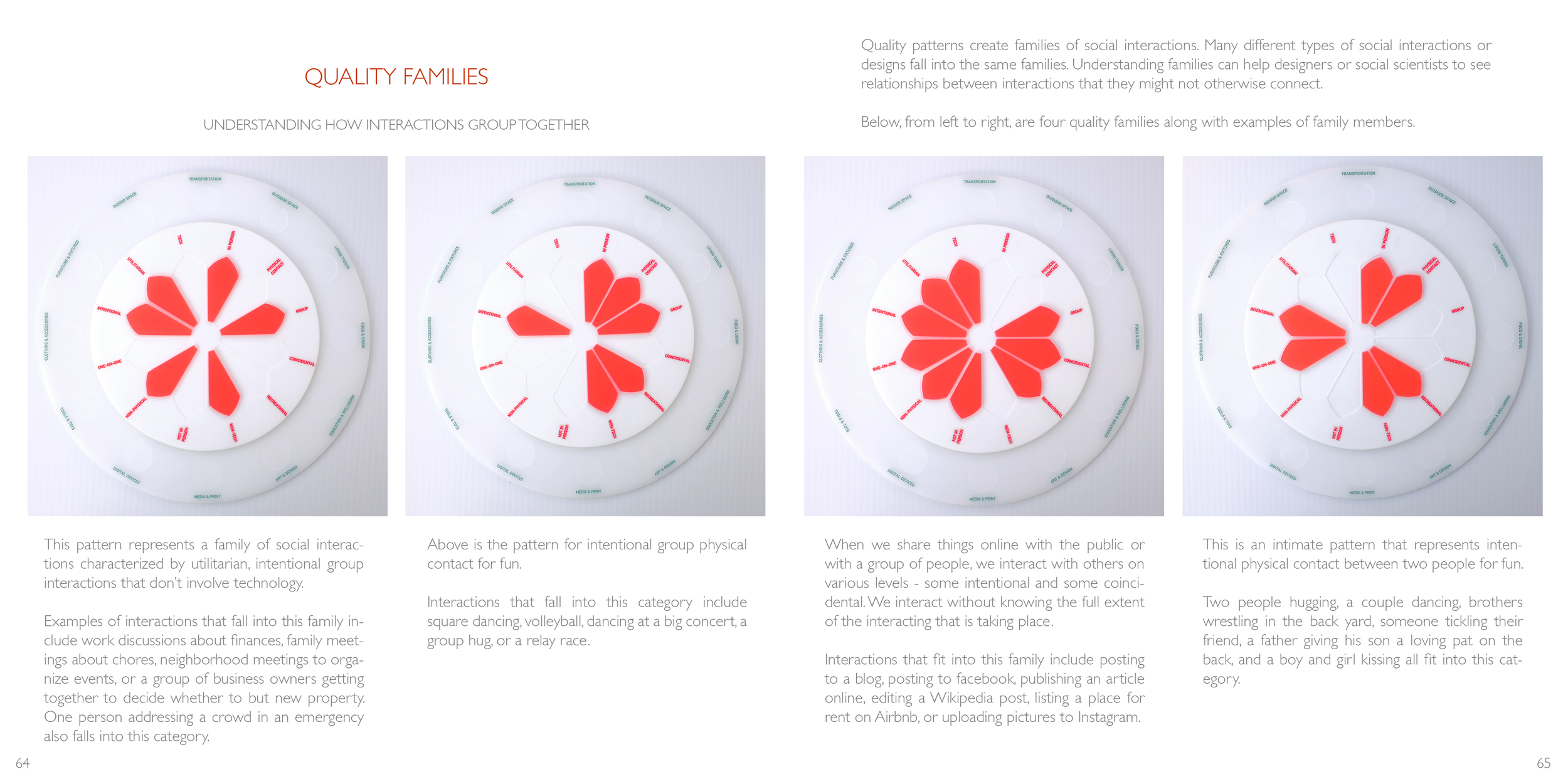
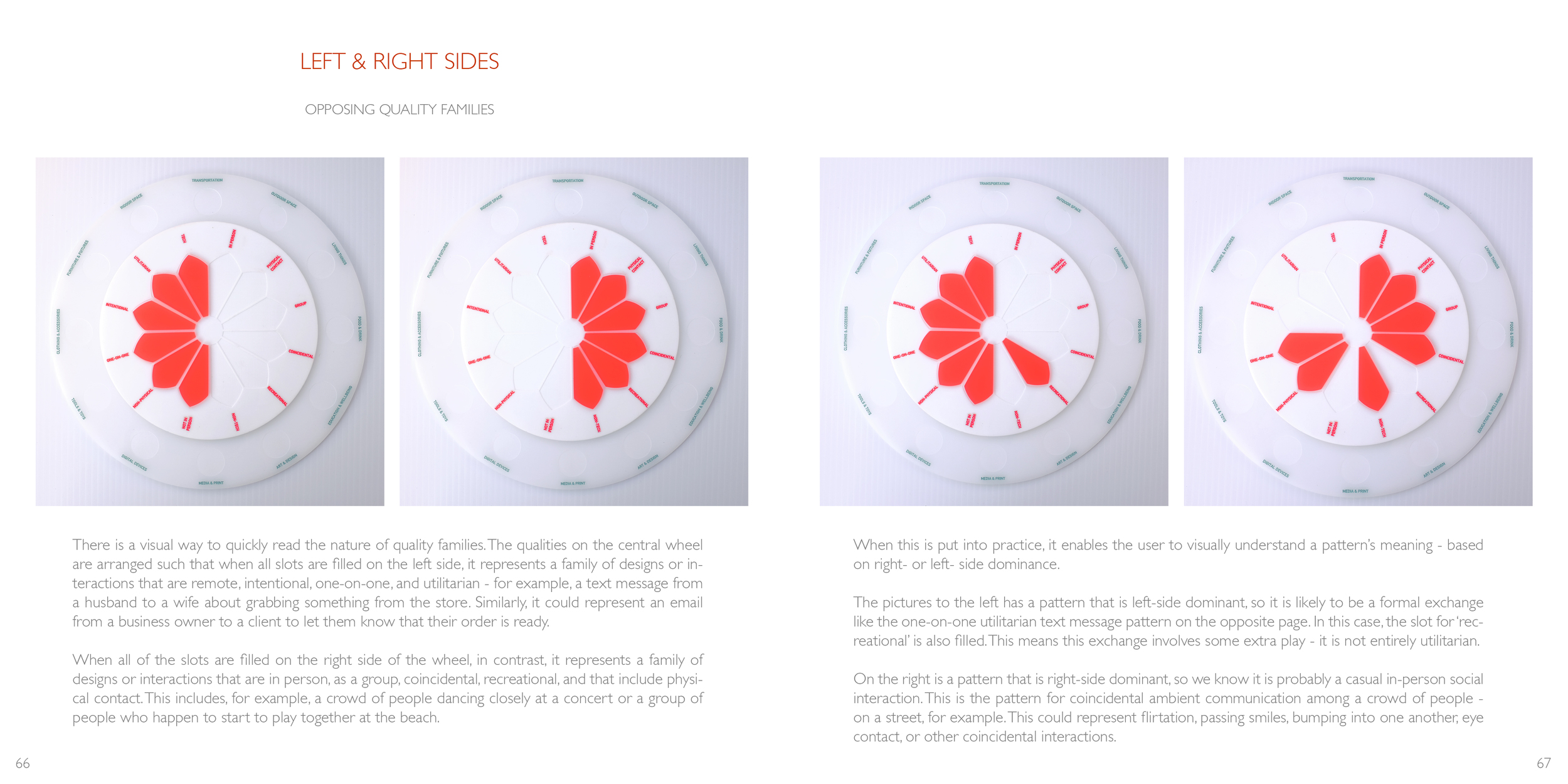
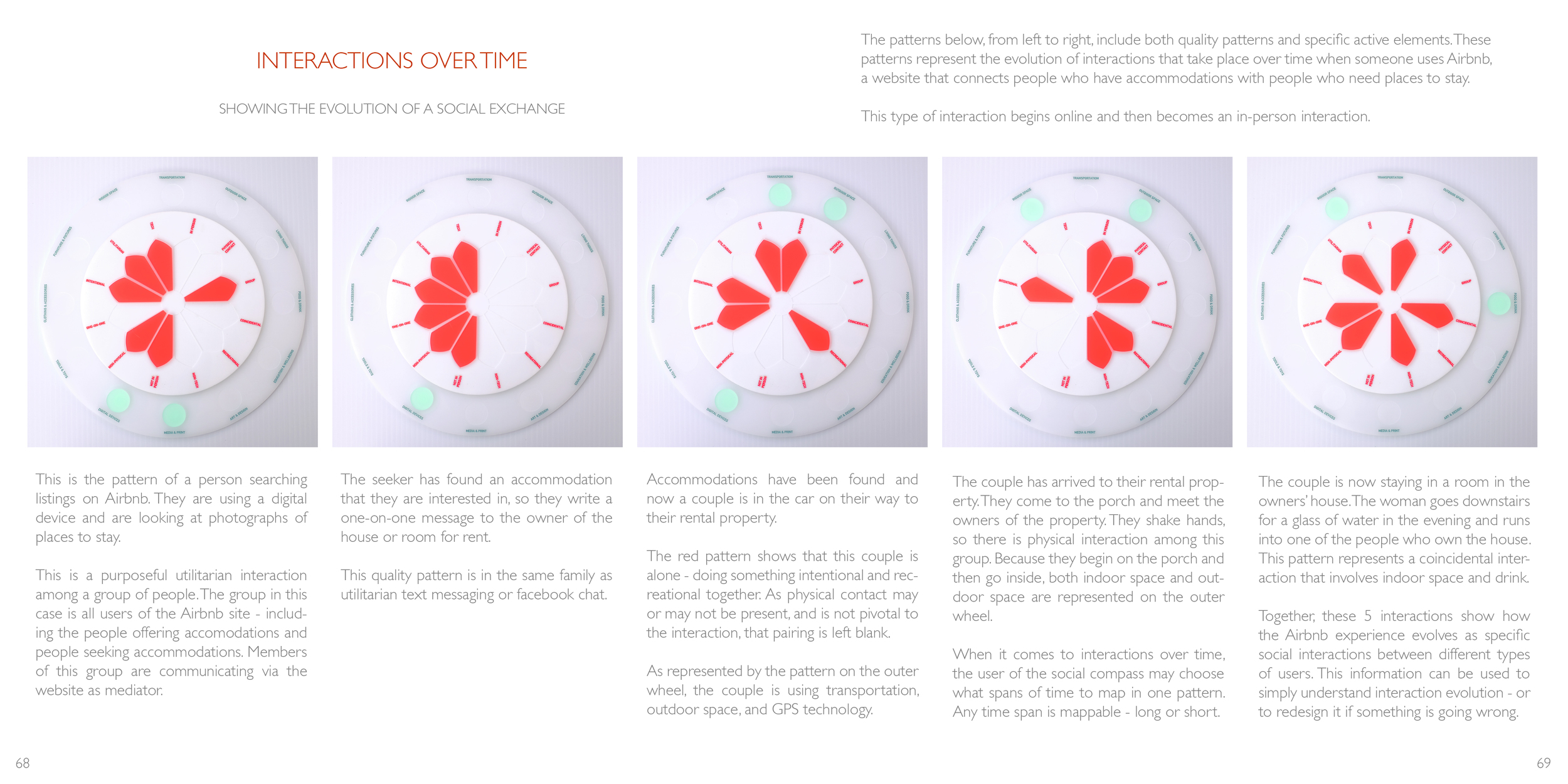
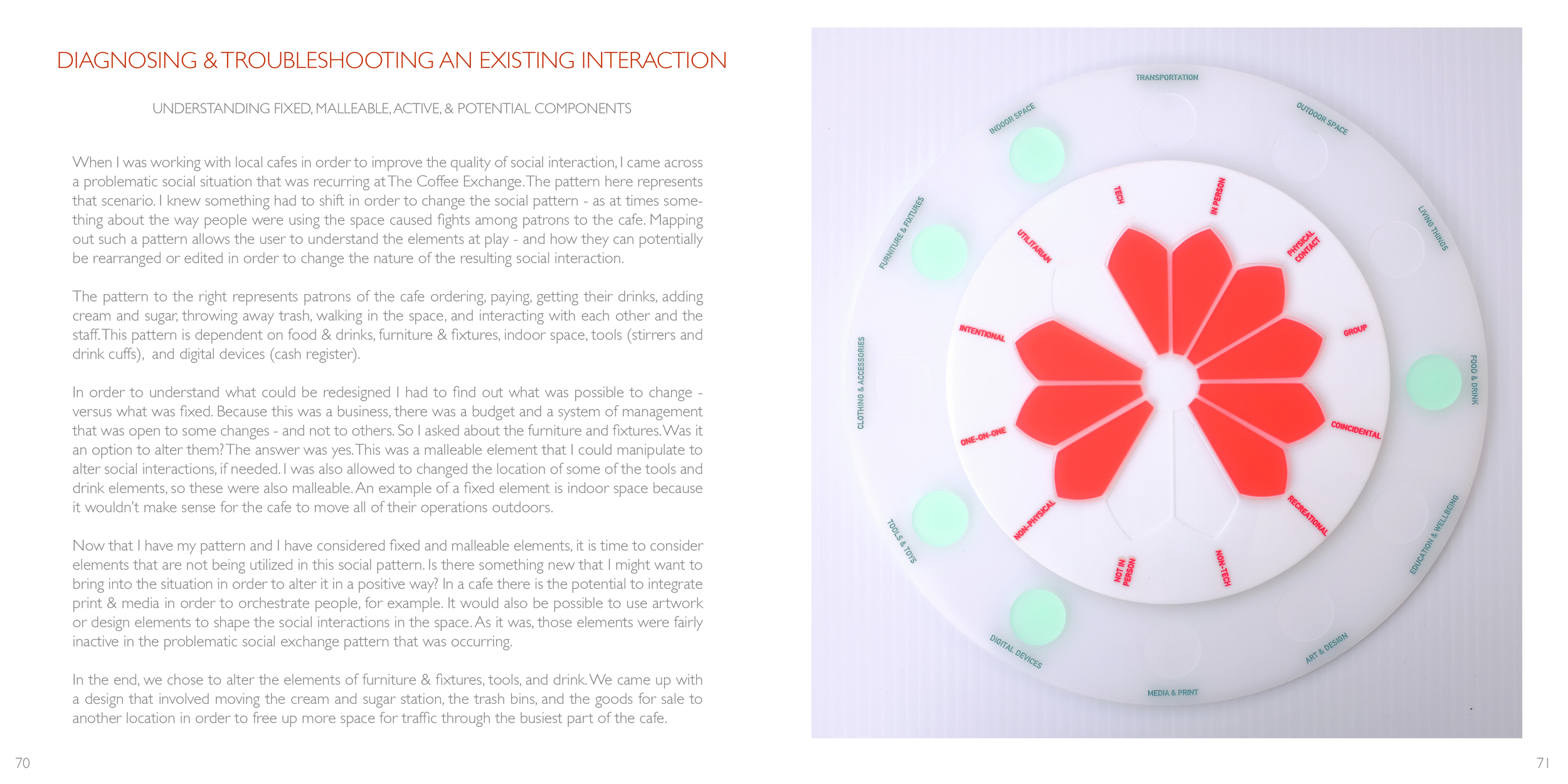
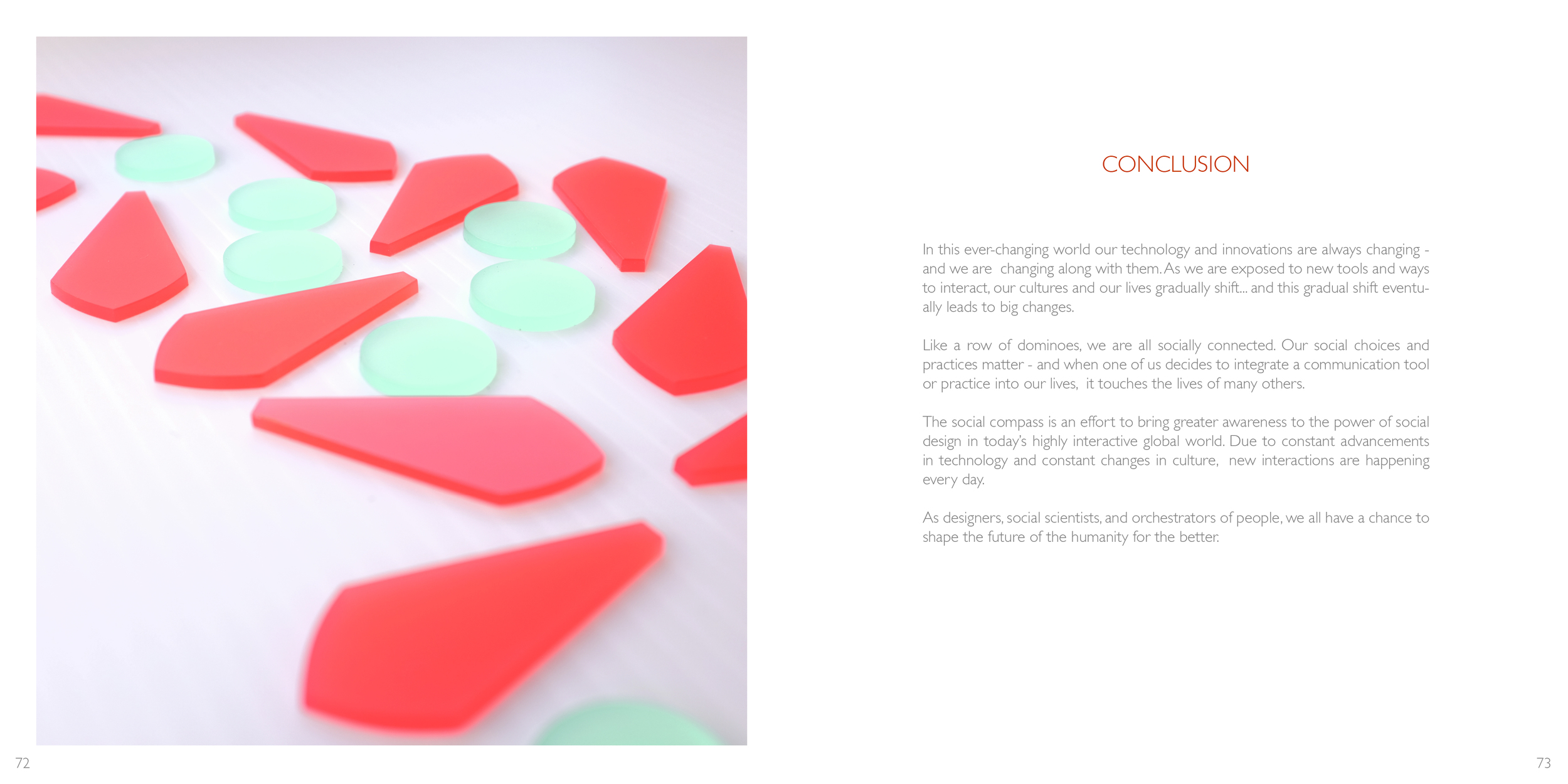
View the full PDF version of my thesis here.
The social compass is a physical tool and methodology for understanding, organizing, diagnosing, and designing social interactions. By visualizing interactions via pattern, the compass allows users to clearly compare social designs, see how interactions evolve over time, and understand the building blocks of interpersonal exchange.
Inspiration: As a designer intrigued by user experience and the potential to shape interactions, I spent the first part of my thesis exploring what brings meaning and satisfaction to human life. Community building, social interaction, and atmosphere all contribute to quality of experience. A sense of our role in relation to people and the environment also has an impact. Quality and ease of communication is important as well.
After my initial research, I gathered more information by talking to Providence residents. I began working with a couple of local cafes in order to redesign their systems, marketing, and space for improved social interaction. Over the course of my discussions with cafe owners and my observations of cafe interactions, I began to see patterns. These patterns became a foundation for ordering and categorizing social interactions. Eventually this system was refined, resulting in the creation of a methodology. The Social Compass is a physical representation of the resulting methodology.
Users: UX Designers, Interior Designers, Event Designers, Social Scientists, Business Owners, Managers, Political Scientists
Methodology and Construction: The compass is composed of two wheels that each have 12 variables as described in the images below. The compass is made from acrylic sheets of various colors and transparencies that have been lasercut and etched, according to Illustrator files. The words were etched and filled with acrylic paint for visibility.
The inner wheel represents quality of interaction. It is composed of 6 opposing pairs - for example - "in person" versus "not in person". When you chart out an interaction, you place a red tile in each slot that applies. This forms a "quality pattern."
The outer wheel represents specific elements that may or may not be active in a social interaction - for example, "Food & Drink."
The inner quality wheel is the core of the compass and may be used on its own. The outer elemental wheel provides an optional further level of detail in addition to quality analysis.
Background and Process: The basis behind the social compass was a careful consideration and study of what it means to be a human animal surviving in an ultimately natural environment with forces we cannot necessarily control. All of the things we interact with are somehow connected to the basic elements of life. We interact with each other, with natural objects, objects that have been altered by humans, and living things. We are affected by the weather and the cycles of nature that determine when and how we are able to grow food. We increasingly push against the boundaries of nature. Design is one way to push against that boundary. We can either push in ways that support cooperation with the environment or we can push in order to control or suppress natural forces. The sketch below represents human orientation in relation to self, other, group, and nature.
After exploring the basic structures that tether us to the people and things around us, I began to work with local cafes in order to study and improve quality of social interaction. I observed customers and employees, conducted surveys, and proposed alterations to the space. Some alterations were designed to discourage conflict and some were designed to encourage play or conversation.
Below are a selection of designs and images from my research regarding users of local cafes, including one of the surveys I conducted in order to gain a preliminary understanding of patrons of The Shop on Wickenden Street, near Rhode Island School of Design.








